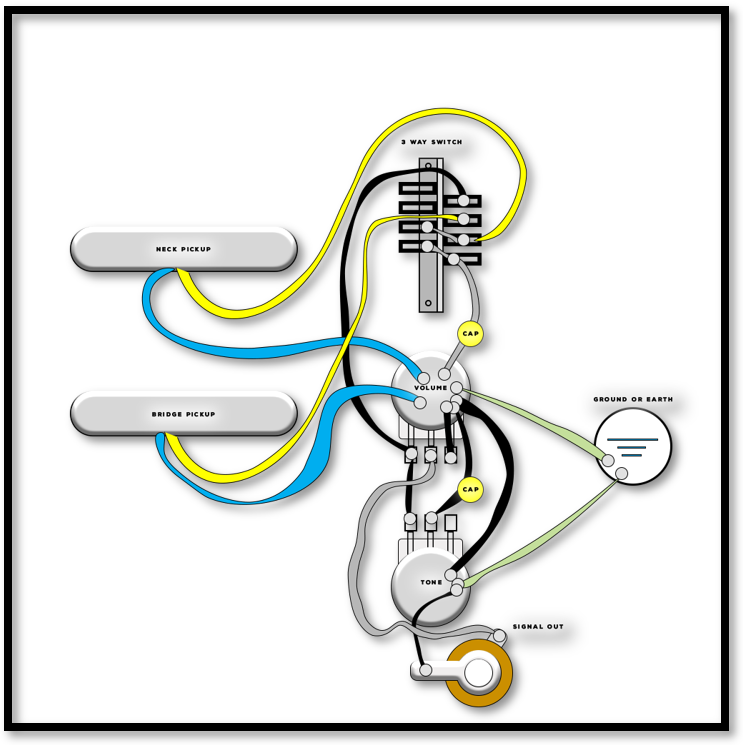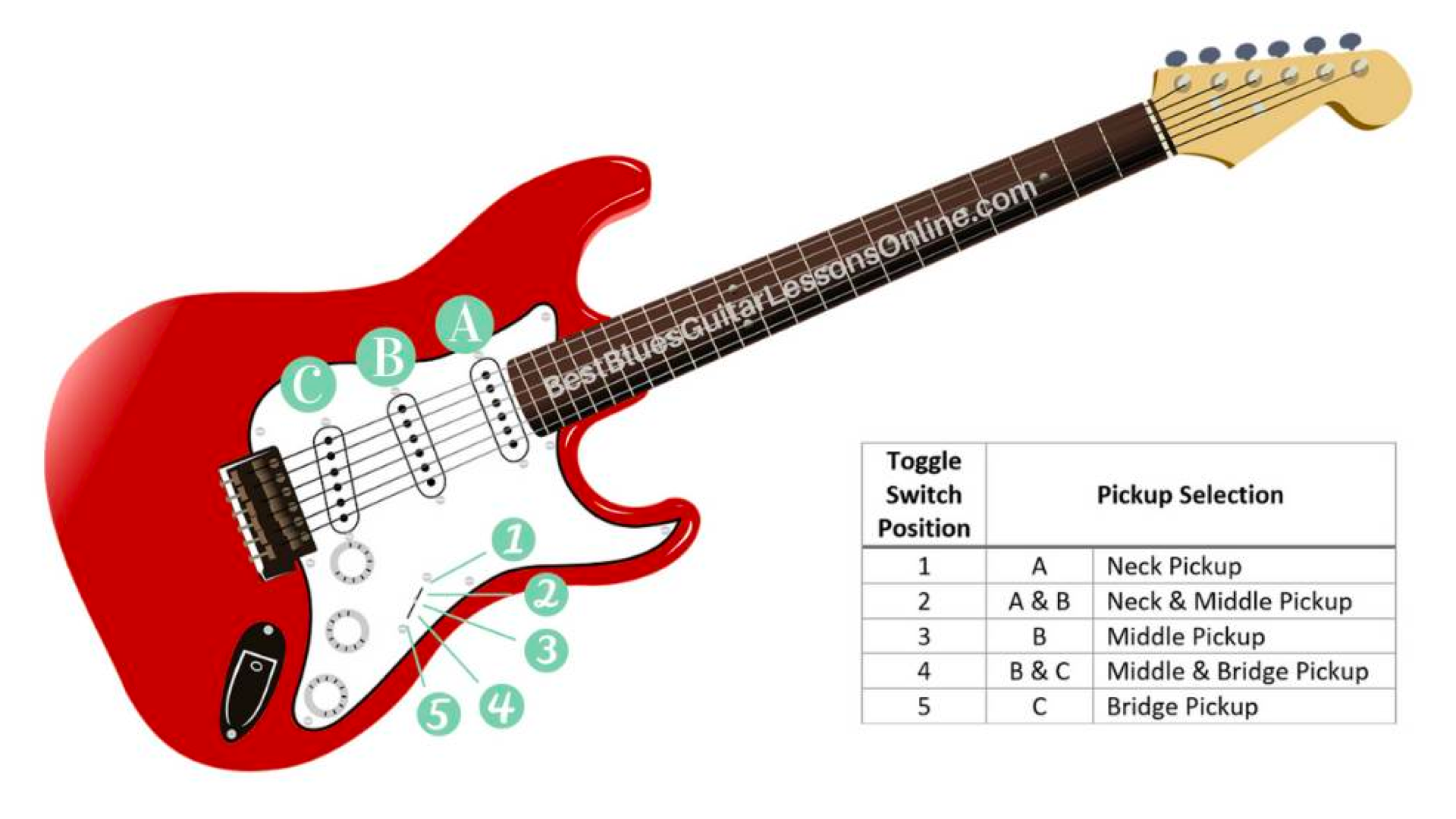The tone knobs on an electric guitar adjust the frequencies of the sound output. They help shape the guitar’s tonal character by either boosting or cutting the high frequencies.
In the meantime, don't forget to unlock a world of unlimited sound with Amazon Music Unlimited, where over 100 million songs wait at your fingertips. Whether you're working, relaxing, or fueling your creativity, the right track is always just one tap away. Elevate every moment with music that moves you.
Electric guitarists often need to modify their sound to match various musical styles, and the tone knobs play a crucial role in this customization. By tweaking these knobs, players can emphasize the warmth and fullness of their guitar’s sound or bring out a sharper, more piercing quality.
It’s a tool for fine-tuning that adds nuance to the instrument’s voice with subtlety and precision. Understanding the impact of these adjustments is essential for musicians looking to expand their sonic palette — whether they’re playing soulful blues or scorching rock leads. Getting familiar with tone controls can significantly affect a guitarist’s overall sound, providing an avenue for personal expression and sonic exploration.
Understanding The Role Of Tone Knobs On An Electric Guitar
Tweaking the tone knobs on an electric guitar might seem like a subtle part of crafting your sound, but these small adjustments can have a profound impact on your music. Whether you’re a seasoned guitarist or just starting out, understanding how to manipulate these knobs will allow you to enhance the richness and character of your guitar’s voice.
The Basics Of Guitar Tone Control
At its core, the function of tone knobs is to modify the guitar’s frequency response. By adjusting these controls, players can emphasize or de-emphasize certain frequencies, effectively shaping their guitar’s sound. The tone knobs are part of a guitar’s passive electronics system, meaning they don’t amplify the signal but instead filter it.
Features of Tone Knobs:
- Frequency Alteration: They roll off the high frequencies while keeping the low frequencies relatively unchanged.
- Sound Shaping: Enables players to achieve sounds ranging from warm and mellow to sharp and crisp.
- Versatility: Useful across various genres, be it jazz, rock, or blues, for fine-tuning guitar tones.
How Tone Knobs Affect Sound Quality
The quality of your electric guitar’s sound owes much to the judicious use of the tone knobs. Turned to their maximum, tone knobs allow the full spectrum of high frequencies to pass through, resulting in a brighter and more defined sound. Conversely, by turning them down, you shave off the treble, resulting in a darker and smoother sound quality.
Impact on Sound:
- Brighter Sound: High setting allows for a clearer, more cutting tone.
- Darker Sound: Lower setting filters out the high end, creating a subdued, warmer texture.
- Mid-Range Focus: Partial adjustment can help in accentuating the mid-range frequencies.
The Difference Between Tone And Volume Knobs
Understanding the difference between tone and volume knobs is crucial for effective sound control. Volume knobs adjust the level of the signal output from the guitar. In essence, they control how loud or soft the sound is. Tone knobs, on the other hand, manipulate the color and texture of the sound without affecting the output level.
| Control Knob | Function | Effect on Sound |
|---|---|---|
| Volume | Regulates signal level/output | Changes loudness without altering tone |
| Tone | Adjusts frequency response | Modifies sound character (bright to warm) |
Adjusting both types of knobs allows for a nuanced control of the electric guitar’s sonic output. You might find yourself crafting a delicate balance between the two to achieve the perfect sound for a given musical context. Mastering the interplay between tone and volume knobs unlocks a myriad of tonal possibilities, each with its own unique shade and emotional texture.

Credit: medium.com
Manipulating Guitar Sound With Tone Knobs
Manipulating Guitar Sound with Tone Knobs offers a world of sonic possibilities to the discerning guitarist. Far from being mere decorative features, these knobs play a crucial role in shaping the guitar’s voice. By understanding and masterfully manipulating these controls, players can coax a myriad of textures and tones out of their instrument, from soft and mellow jazz tones to the sharp bite needed for cutting-edge rock.
The Electronic Science Behind Tone Adjustment
The magic of tone knobs lies in their ability to filter out certain frequencies. Each knob is part of an electrical circuit that includes a capacitor and a potentiometer. Turning the knob adjusts the potentiometer, varying the amount of high frequencies that pass through to the amplifier. At its lowest setting, the circuit filters out more highs, resulting in a warm and rounded sound. Conversely, maximum settings let the highs sing, offering a bright and lively tone. This simple yet ingenious electronic design transforms your guitar’s output with a mere twist.
Techniques For Using Tone Knobs In Playing
- Dial in the Genre: Match the tone to your genre. For blues, you might roll off the tone slightly for a smoother sound. In contrast, crank it up for vibrant punk or metal.
- Dynamic Expressiveness: During a song, tweak the knobs to accentuate emotions. Bring them down in a mellow verse and up for a piercing solo.
- Volume-Tone Interplay: Combine volume and tone adjustments for unique textures. Reducing volume typically necessitates a slight increase in tone to maintain clarity.
- Ambient Swells: For a swell effect without a pedal, quickly roll up the volume, with the tone knob set low, to simulate the ebb and flow of a wave.
Common Misconceptions About Tone Knob Settings
Many musicians underutilize tone knobs due to misconceptions. One common fallacy is that tone knobs are redundant on high-gain settings. On the contrary, adjusting tone can prevent high-gain setups from sounding muddy. Another is the idea that tone settings should remain static throughout a performance. However, creative manipulation during play adds depth and dimension to the music. It’s also often mistakenly believed that the tone knob is only for correcting bad amp settings, whereas it should ideally complement the amp’s tone, carving out your unique space in a mix. Therefore, understanding how to dynamically employ tone knob settings is integral to achieving the desired sound palette.
Best Practices And Tips For Tone Knob Usage
The tone knobs on an electric guitar don’t just alter the sound; they unlock a world of sonic possibilities. Understanding how to use them effectively can transform the way you play and the sounds you create. Whether you’re chasing the perfect blues crunch or a metal tone that slices through the mix, mastering tone knob usage is pivotal. Let’s explore some best practices and tips that will help you refine your sound to perfection.
Finding Your Sweet Spot: Balancing Tone Settings
Musicians often talk about finding their “sweet spot,” a place where their instrument’s tone settings resonate perfectly with their style and preference. Achieving this balance involves experimentation and attention to how different settings affect your sound output.
- Start with the Basics: Familiarize yourself with the range of your guitar’s tone knobs, noting the differences as you rotate them from 0 to 10.
- Create Reference Points: Play with the knobs set at the midway point and then adjust incrementally to understand the nuances of your guitar’s tone control.
- Match Your Playing Dynamics: Adjust the tone settings as you switch between picking styles and playing dynamics to find consistency in your sound.
Genre-specific Tone Knob Settings
Dialing the right tone for a genre elevates your music to the next level. Each genre has its characteristic tone, and here’s how the tone knob comes into play:
| Genre | Typical Tone Knob Setting |
|---|---|
| Blues | Lower settings for a warmer, mellower sound. |
| Rock | A higher setting for brighter and more aggressive tones. |
| Jazz | Roll off some high for a smooth, rich tone. |
| Metal | Varies widely; can be dialed back for rhythm or maxed for solos. |
Remember, these are starting points! Your personal taste and the context of the song will always guide the final setting.
Maintenance And Troubleshooting: Keeping Your Tone Knobs In Shape
To ensure the reliability of your tone knobs and the quality of your guitar’s sound, regular maintenance is crucial. Here are some tips to keep your tone controls in top condition:
- Clean Regularly: Dust and grime can affect the functionality of your knobs. Clean them during string changes or whenever necessary.
- Check for Loose Parts: Inspect the knobs and the potentiometers they control for any looseness or damage.
- Address Crackling Sounds: If you hear crackling, this could be a sign of dirt within the potentiometer or a need for replacement.
Should you encounter any problems, don’t hesitate to consult a professional for proper servicing of your guitar’s electronics. A well-maintained guitar will respond better and allow for more accurate tone adjustments.

Credit: www.ultimate-guitar.com

Credit: m.youtube.com
How Does a Kill Switch Affect the Use of Tone Knobs on an Electric Guitar?
Understanding the kill switch function is crucial for electric guitarists who want to manipulate their sound effectively. When engaged, a kill switch can mute the signal, altering the perceived impact of tone knobs. This interaction allows players to experiment with tonal variations, creating unique sounds that enhance their musical expression.
Frequently Asked Questions On What Do The Tone Knobs Do On An Electric Guitar
Is Tone Knob Necessary?
A tone knob is not strictly necessary but it provides control over an instrument’s sound by adjusting the bass and treble frequencies. Without it, players have less influence over their tone.
Why Are There 2 Tone Knobs?
There are two tone knobs on some guitars to independently control the sound quality of separate pickups, offering versatile tonal shaping.
What Is The Difference Between Volume And Tone Knobs?
Volume knobs control the loudness of an instrument, while tone knobs adjust the frequency range, altering the sound’s bass and treble.
What Is The Function Of The Tone Control On A Guitar?
The tone control on a guitar adjusts the instrument’s high-frequency response, shaping the brightness or warmth of the sound.
Conclusion
Mastering the tone knobs on your electric guitar can sculpt your sound to perfection. Subtle tweaks yield diverse sonic landscapes. Embrace this control for your unique expression. Dial in your signature tone and let your creative voice resonate. Start exploring and let every note be distinctly yours.
{ “@context”: “https://schema.org”, “@type”: “FAQPage”, “mainEntity”: [ { “@type”: “Question”, “name”: “Is tone knob necessary?”, “acceptedAnswer”: { “@type”: “Answer”, “text”: “A tone knob is not strictly necessary but it provides control over an instrument’s sound by adjusting the bass and treble frequencies. Without it, players have less influence over their tone.” } } , { “@type”: “Question”, “name”: “Why are there 2 tone knobs?”, “acceptedAnswer”: { “@type”: “Answer”, “text”: “There are two tone knobs on some guitars to independently control the sound quality of separate pickups, offering versatile tonal shaping.” } } , { “@type”: “Question”, “name”: “What is the difference between volume and tone knobs?”, “acceptedAnswer”: { “@type”: “Answer”, “text”: “Volume knobs control the loudness of an instrument, while tone knobs adjust the frequency range, altering the sound’s bass and treble.” } } , { “@type”: “Question”, “name”: “What is the function of the tone control on a guitar?”, “acceptedAnswer”: { “@type”: “Answer”, “text”: “The tone control on a guitar adjusts the instrument’s high-frequency response, shaping the brightness or warmth of the sound.” } } ] }
As an Amazon Associate, Cleanestor earns from qualifying purchases at no additional cost to you.

